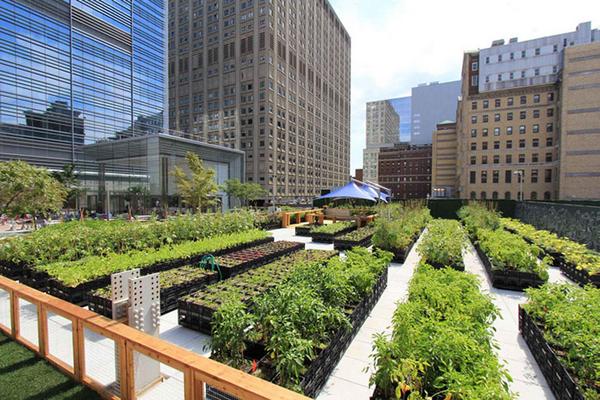7 Simple Techniques For City Blooming
7 Simple Techniques For City Blooming
Blog Article
4 Simple Techniques For City Blooming
Table of ContentsThe 7-Second Trick For City BloomingCity Blooming Fundamentals ExplainedSome Of City BloomingExcitement About City BloomingThe Greatest Guide To City Blooming
Interested in growing food for sale in the City of Chicago? Below is a checklist of frequently asked questions concerning the policies and policies that growers should think about when planning a city agriculture job.
The zoning modification does not customize any type of various other codes taking care of composting, building permits, purchasing or leasing City had residential property, company licenses or ecological contamination. There are existing codes that manage these concerns and they continue to be completely result and may apply to your project. Neighborhood yards are commonly owned or managed by public entities, civic companies or community-based companies and kept by volunteers.
Urban farms grow food that is meant to be offered, either on a not-for-profit or for-profit basis. Due to their commercial purpose, city ranches need a service permit. Yes. A community yard is allowed to market surplus produce that was expanded on website if the sales are accessory or secondary to the yard's key function explained over.
City Blooming Fundamentals Explained
Composting is enabled yet just for plant material that is produced and utilized on website. The quantity of garden compost product can not go beyond 25 cubic backyards at any type of given time according to the criteria in 7-28-715 of the City's Municipal Code. Yes. Because the soil at a lot of new yard sites needs modifying, garden compost, soil, timber chips, or other products can be obtained to build or improve the growing room - home and garden.
:max_bytes(150000):strip_icc()/womanonrooftopurbangarden-7fffbb3897ac48f390d94b9545d4d082.jpg)
If a structure permit is called for after that the hoophouse will be thought about an accessory structure. You can discover more about the building permit needs by calling the Division of Structures. The 25,000-square-foot size limit is planned to stop a single area yard from dominating a provided block or interfering with the block's existing property or commercial character.
The limitation does not apply to gardens found in Public Open Room (POS) areas. Can there be even more than one neighborhood garden that is 25,000 square feet on a solitary block? Yes. The dimension limitation applies to specific gardens, not to individual blocks. No. Fencing is not needed, however, gardens that have large car park locations might be needed to set up fence or various other landscaping functions.
How City Blooming can Save You Time, Stress, and Money.
B1 & B2 areas call for that all industrial use tasks be carried out inside your home. R areas limit business task. The laws show the purpose and intent of the Zoning Code. Is fencing needed for city ranches? Yes. Fences may be required, along with landscaping and testing, for particular car parking locations and exterior work or storage areas relying on area and the specific activity occurring.
Urban farms need building authorizations and zoning authorizations prior to building and construction (eco-friendly practices). Various other forms of city testimonial may be required depending on details structures, tasks, size, landscape design, licensing, public health and stormwater management issues.
Yes. The kind of license is established by what is happening at the website. The Department of Service Affairs and Consumer Protection can help establish the details kind of organization license that's required. Yes. Off street car park is required for many commercial projects in Chicago. The called for number of garage is based upon the variety of employees dealing with site and not the square video of the growing area.
About City Blooming

Yes. An urban ranch can market compost material produced on site, nevertheless, the operation needs to adhere to the laws in 7-28-715 of the Chicago Municipal Code. Yes. Aquaponic systems are enabled indoors on urban ranches in lots of zoning districts. Nonetheless, a zoning evaluation and building authorization is called for in order to install frameworks or systems and a company certificate is needed as defined above.
Up to five hives or nests of honey bees may be maintained as an accessory use. However, beekeepers have to sign up with the Illinois Division of Farming. For additional information about the suggested zoning amendment you might contact the Department of Real Estate and Economic Growth, Bureau of Preparation and Zoning at 312.744.8563.
Farming in cities and urban areas A metropolitan ranch in Chicago. Urban farming describes various techniques of growing. http://prsync.com/city-blooming/, handling, and dispersing food in metropolitan locations. The term likewise relates to the area tasks of animal husbandry, tank farming, beekeeping, and gardening in a city context. Urban farming is identified from peri-urban farming, which occurs in rural locations beside suburban areas.
Some Known Details About City Blooming
It can include an useful reference activity of organic growers, "foodies" and "locavores", that seek to form social networks based on a shared principles of nature and area holism. These networks can create using formal institutional support, coming to be integrated right into neighborhood town planning as a "change community" motion for sustainable urban development.
In either situation, the much more direct access to fresh veggie, fruit, and meat items that may be become aware through metropolitan agriculture can boost food security and food safety and security while reducing food miles, causing lower greenhouse gas exhausts, thereby adding to environment modification reduction. Some of the very first proof of city farming comes from Mesopotamia.
Report this page